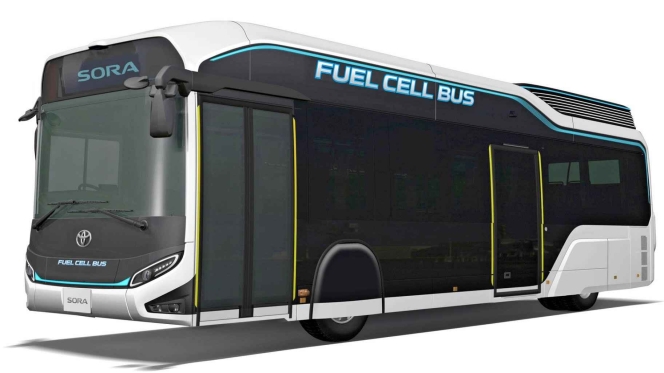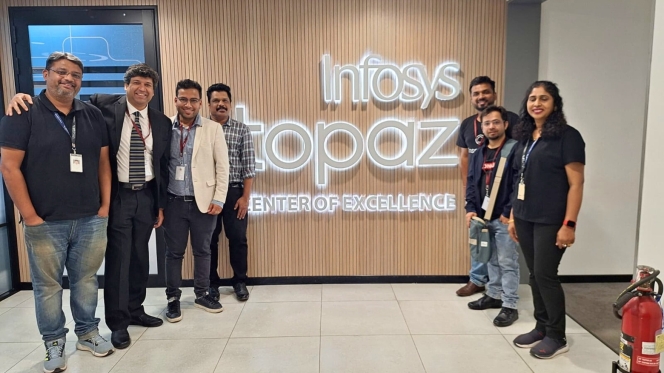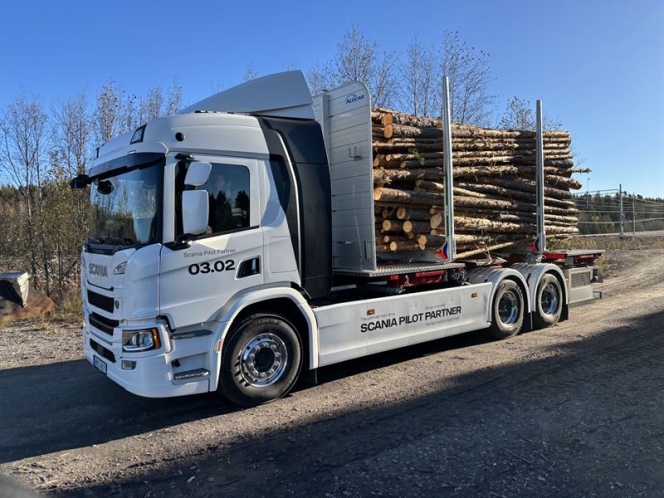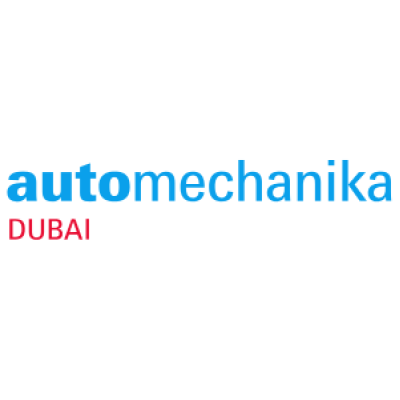Hydrogen Fuel Cell Technology Takes Over The Industry
- By MT Bureau
- October 10, 2020

 You must be wondering, what exactly is hydrogen fuel cell (HFC) technology, and what is so good about it? Hydrogen fuel is a clean fuel that is burned along with oxygen in an electrochemical power generator to generate electricity, and in the process, produces water and heat as by-products. What sets hydrogen fuel apart, however, is the fact that it serves as an alternative to diesel fuel in more ways than one: its fuel-cycle emits no pollutive exhaust, and through renewable energy, there contains no trace of greenhouse gas emissions. Vehicles that are powered by the hydrogen fuel cell, thus, significantly reduce our use and dependence on diesel oil and lower the chances of harmful emissions contributing to climate change. What started out as an experiment among startup companies and early projects is now dominating the commercial vehicle industry with many of the industry’s biggest players putting in large investments in the technology.
You must be wondering, what exactly is hydrogen fuel cell (HFC) technology, and what is so good about it? Hydrogen fuel is a clean fuel that is burned along with oxygen in an electrochemical power generator to generate electricity, and in the process, produces water and heat as by-products. What sets hydrogen fuel apart, however, is the fact that it serves as an alternative to diesel fuel in more ways than one: its fuel-cycle emits no pollutive exhaust, and through renewable energy, there contains no trace of greenhouse gas emissions. Vehicles that are powered by the hydrogen fuel cell, thus, significantly reduce our use and dependence on diesel oil and lower the chances of harmful emissions contributing to climate change. What started out as an experiment among startup companies and early projects is now dominating the commercial vehicle industry with many of the industry’s biggest players putting in large investments in the technology.
How Does it Work?
Hydrogen fuel can be produced through several methods, and in the commercial vehicle industry, fuel is processed in a fuel cell that is composed of three main components: an anode, a cathode, and an electrolyte membrane. This type of fuel cell is called a Proton-Exchange Membrane Fuel Cell, or also known as a polymer electrolyte membrane (PEM) fuel cell, which is mainly reserved for transport applications and stationary and portable fuel cell applications. The PEM fuel cell does its job by passing hydrogen through the anode, at which hydrogen molecules are split into electrons and protons. The former ones take the path of a circuit in the fuel cell to generate electric current and excess heat, while the protons go through the electrolyte membrane. At the same time, the PEM fuel cell passes oxygen from the surrounding air through the cathode on the other side, where the oxygen meets with the protons and electrons to produce water molecules. This does not get any simpler than your run-of-the-mill science experiment in school!
 What Are Fuel Stacks Then?
What Are Fuel Stacks Then?
What lies in the heart of a fuel cell vehicle (FCV) is the fuel cell stack. Because fuel cells generate less than 1.16 volts of electricity each, they must be assembled atop one another to create a fuel cell stack in order to generate enough power to run a vehicle. The potential power that can be generated by a fuel cell stack largely varies and is dependent on the number and the size of the individual fuel cells of the fuel cell stack, as well as the surface area of the PEM.
The Preferred Alternative
Hydrogen fuel cell has been proven to yield positive results for both the environment and the wallet in the long term.
Reduction in Greenhouse Gas Emissions
Contrary to diesel fuel, which emits greenhouse gases (GHGs) and carbon dioxide (CO2) that are large contributors to climate change, the only by-products of vehicles–when fueled by pure hydrogen–are heat and water with the release of zero tailpipe GHGs. While it is possible for FCVs to still generate GHGs, depending on the production method, the GHGs emitted is still far less great than those emitted by gasoline and diesel fuel. FCVs also eliminate the maintenance costs that come with storing diesel fuel that may prove harmful later on. Many of the industry’s big players make use of environmentally benign hydrogen in their hydrogen fuel cell products to eliminate and prevent the harmful impact of fuel spillage or leaks and air pollution.

 Cutback on Vehicle Oil Dependence
Cutback on Vehicle Oil Dependence
Many companies have incorporated hydrogen fuel cells in their corporate sustainability programmes, and the industry is seeing a shift of focus from diesel fuel to environmentally friendly alternatives. With the industry soon to be saturated with FCVs, our dependence on foreign oil will be significantly reduced and eventually eradicated. Hydrogen can be extracted sustainably from domestic sources, such as natural gas and coal, as well as from renewable sources, such as water, biogas, and agricultural waste. From an economic perspective, this would allow us to be less affected by oil price hikes and drops in the volatile oil market.
Lowering of Operational Costs
Hydrogen fuel cells require little to no maintenance as they eliminate the need to change, charge, and manage batteries, a maintenance check that is necessary for batteries, internal combustion generators, and the like. Hydrogen fuel cell units have a longer running time than do lead-acid batteries and, when power is running low, would not take more than five minutes to refuel. Companies that employ FCVs in their fleet benefit substantially from this as it reduces vehicle and personnel time, giving birth to a higher efficiency rate. This loss of regular maintenance saves not only money but labour, time, and the space for battery rooms as maintenance checks require optimal conditions.
 Increase in Energy Efficiency
Increase in Energy Efficiency
Hydrogen fuel cells are well known to be more energy-efficient than other forms of power. When a fuel cell vehicle is fueled by pure hydrogen, the hydrogen fuel cell has the potential to be up to 80-percent efficient. This means that the fuel cell converts up to 80 percent of the energy content of the hydrogen into electrical energy. The electric motor and inverter of the vehicle thus have the responsibility to convert that electrical energy into mechanical energy, with an average of 80 percent efficiency. Combined, this gives an overall 64-percent of increased efficiency when a vehicle is powered by a hydrogen fuel cell!
Increase in Durability and Reliability
Hydrogen fuel cells are notably more robust than other forms of fuel and can weather all types of conditions, from cold environments to harsh storms. This makes fuel cells a reliable asset to companies that engage commercial vehicles in tough environments. Additionally, because they do not have any moving parts, hydrogen fuel cells operate quietly even in the midst of a snowstorm!
With environmentally friendly applications and time-consuming maintenance, we are beginning to see the boom of hydrogen fuel cell technology in the commercial vehicle industry, and with good reason! (MT)
(Credits / Sources: U.S Energy Information Administration, Hydrogenics, Toyota, Verdict Media, Stanford University, University of Nebraska, Fuel Economy, Plug Power)
Disseqt AI Partners Tata Technologies And Infosys For Agentic AI Adoption
- By MT Bureau
- December 04, 2025

Agentic AI platform Disseqt AI has announced a partnership with Tata Technologies and Infosys. As per the agreement, Disseqt AI will assist both companies' IT and DevOps teams in developing and fast-tracking the production of tailored Agentic AI applications for automobile and FinTech companies globally.
The partnership aims to help auto and FinTech firms embrace customised Agentic AI faster and in a secure manner.
Disseqt AI, which has operations in Bengaluru, San Francisco and Dublin, provides an enterprise-grade platform for IT and DevOps teams. The company claims its platform cuts down Agentic AI testing and operations cost by 70 percent and improves productivity by up to 80 percent. The platform allows these teams to test, simulate and monitor their Agentic AI systems tailored across industries, ultimately enabling enterprises to operationalise tailored Agentic AI faster and at scale, without sacrificing ethics, governance and compliance.
Apoorva Kumar, Founder and CEO, Disseqt AI, said, “This is a landmark announcement for us as we further embed Disseqt into enterprise workflows for testing, simulation, monitoring and auditability purposes. We are already working closely with both Tata and Infosys on several projects and are proud to be part of their innovation initiatives”
Last month, Disseqt AI announced a strategic collaboration with HCLTech and Microsoft to guide financial services institutions with Agentic AI adoption.
Battery Passport Implementation Beyond EVs To Be Focus Of Barcelona Event
- By MT Bureau
- December 03, 2025

Battery and Energy Storage Europe has announced a programme focused on the EU Battery Passport, a regulatory milestone that becomes mandatory in February 2027. The Barcelona-based event will address the compliance gap for applications beyond the electric vehicle (EV) sector, which have dominated the conversation to date.
The event, taking place on 8th and 9th September 2026 at Fira de Barcelona's Gran Via venue, will focus on solutions and talks for applications that fall within the regulation's scope: stationary energy storage, industrial batteries, grid-scale systems, long-duration energy storage and emerging applications in aerospace, maritime and rail electrification.
With the February 2027 legal requirement date approaching, the programme will bring together industry leaders, technology providers, and policy experts to address the compliance challenges facing these diverse sectors.
The Battery Passport is a digital record documenting a battery's entire lifecycle, from raw material sourcing to production, performance and eventual recycling. From February 2027, it becomes mandatory for all rechargeable EV, industrial and LMT batteries over 2 kWh sold in the EU.
Linked via QR code, the passport will track each battery's complete lifecycle, including composition, carbon footprint and recycled content, fundamentally transforming supply chain transparency and sustainability practices across Europe.
The programme will explore implementation topics including digital infrastructure requirements, data management systems, supply chain integration, verification processes and recycling traceability.
Ken Davies, Conference Programme Director at Battery and Energy Storage Europe, said, "The Battery Passport represents one of the most significant regulatory shifts our industry has faced, yet many companies are still grappling with what implementation actually means for their operations. While the EV sector has dominated the conversation, there's a critical need to address how this regulation applies to stationary storage, industrial applications and the innovative battery technologies powering Europe's energy transition. With the clock ticking toward February 2027, Battery and Energy Storage Europe will shine a light on the practical implementation requirements for these often-overlooked sectors, connecting stakeholders with actionable solutions and bringing together the expertise, technology providers, and collaborative spirit needed to turn compliance into competitive advantage across the full spectrum of battery applications."
- Scania
- Horse Powertrain
- SCA
- hybrid truck
- Aurobay Technologies
- Matias Giannini
- Tony Sandberg
- Ingo Scholten
Scania Selects Horse Powertrain For Range-Extender Truck Pilot In Sweden
- By MT Bureau
- December 03, 2025

Horse Powertrain has been selected by Scania to provide its range-extender system for a pilot vehicle, currently operating as a heavy-duty timber truck in Sweden. The collaboration is a step in testing hybrid powertrain solutions for demanding transport applications such as forestry logistics.
The pilot is part of the Scania Pilot Partner program and is currently operating in Sweden under SCA, one of Europe’s forestry companies.
The vehicle is built to handle Sweden’s timber routes, transporting heavy loads through remote terrain where access to charging infrastructure remains scarce. By combining a battery-electric drivetrain with the generator designed in Sweden by Horse Powertrain’s division Aurobay Technologies, the truck achieves both long-distance capability and reduced CO2 emissions.
The test route covers approximately 16 km, with an operational target of completing 7–8 rounds per day, comparable to a diesel truck.
The configuration supports the truck’s battery packs with a 120 kW range-extender unit based on Horse Powertrain’s 2.0 litre multi-fuel engine. Acting purely as an onboard charger, the unit supplies electric energy when required during long hauls, temperature extremes, or delays.
Matias Giannini, CEO, Horse Powertrain, said, "Forestry logistics represents one of the toughest challenges for electrification. The forest roads of northern Sweden demand strength, range and reliability. Charging stations are few, but the timber never waits. You can think of our range-extender as a powerbank for a heavy-duty truck: silent, efficient, and always there when you need it. By partnering with Scania and drawing on our engineering excellence, we’re proving how a compact, high-efficiency range-extender enables electric trucks to operate reliably in the most demanding environments. It’s a technology that cuts CO2 now.”
Tony Sandberg, Vice-President at Scania Pilot Partner, added, "What we’re doing in Sweden with Horse Powertrain and SCA builds directly on the 100-day trial we ran together with a logistics partner in Germany earlier this year. That vehicle logged almost 22,000 kilometres and drove more than 90 percent of the time on pure electric power, only using the range-extender when no charging was available. The result was a CO2 reduction of over 90 percent compared with a diesel truck. Those learnings give us a strong foundation as we tailor the system for demanding Nordic timber operations."
Ingo Scholten, Chief Technology Officer, Horse Powertrain and Managing Director Sweden, Aurobay Technologies division, said, “Electrifying heavy-duty routes means understanding what drivers and operators face hour by hour. Long stretches without charging, variable loads and rapidly changing weather. This pilot lets us study those realities directly in day-to-day timber operations. The range-extender’s role is simple. Provide a stable, efficient energy supply so drivers can complete their full shift without interruption and with far lower greenhouse-gas emissions than a traditional diesel truck. The data we gather here will guide how we refine the technology and scale it for wider use across demanding transport applications.”
Horse Powertrain’s modular range-extender architecture builds on the core technology used in its passenger-car and light-commercial hybrid systems, adapted for the higher power output and durability demands of heavy-duty applications. Unlike conventional fixed-speed generator sets, the engine can operate across its full power band, allowing the system to deliver the required output efficiently while keeping fuel consumption, noise and vibration low.
The pilot truck is now undergoing testing in regular operations, carrying full timber loads to gather performance and efficiency data in real-world conditions. The results will guide future deployments of electrified powertrains in the forestry sector and other heavy-duty applications.
Maruti Suzuki Launches One India, One EV Charging Platform
- By MT Bureau
- December 03, 2025
Maruti Suzuki India, the country’s largest passenger vehicle maker, is gearing up to mark its entry into the electric vehicle segment with the soon-to-be-introduced e Vitara has announced an EV ecosystem with a comprehensive end-to-end digital platform for charging needs, including home and public charging, with an integrated payment journey.
The company has signed collaboration agreements with 13 Charge Point Operators (CPOs) and aggregators to provide seamless charging experiences on a single platform.
Maruti Suzuki has established a network of over 2,000 exclusive charging points across its nationwide dealer network, spanning more than 1,100 cities. Customers’ charging needs are further supported by the extensive partner-operated all-India charging network.
Aligned with its global vision, Maruti Suzuki will work with its partners to enable more than 100,000 Public Charging Points by 2030.
Hisashi Takeuchi, Managing Director & CEO, Maruti Suzuki India, said, “At Maruti Suzuki, we strive to extend a delightful ownership experience to our customers to build lasting trust. Today, we are taking a historic step, as we enter the domain of electric mobility with full readiness to address the EV charging concerns and boost customer confidence. We have established a robust network of over 2,000 Maruti Suzuki exclusive charging points across our sales and service network, spanning more than 1,100 cities. Further, we have collaborated with 13 Charge Point Operators to offer access to a vast charging infrastructure across the country. Aligned with Suzuki’s global vision, we plan to introduce multiple EVs and to support this, our aim is to enable a network of over 1 lakh charging points across India by 2030, along with our Dealer and CPO partners.”
'E for Me' Digital Platform
The Maruti Suzuki ‘e for me’ EV charging mobile app enables end-to-end usage of EV charging points from partner-operated charging points and Maruti Suzuki’s own network on a single platform.
The app offers a uniform customer journey for EV charging and payment through UPI or exclusive ‘Maruti Suzuki Money’, powered by Razorpay.
The platform's functions include:
- Locate, Pay & Use EV charging points available on the app.
- Use Public and Smart Home Charger from the same app.
- One card for ‘Tap N Charge’ functionality at Maruti Suzuki dealer outlets and home charger.
- Mirror e for me app on the infotainment system for seamless in-car EV charging experience.
- Remotely start/stop and manage the power output of the smart home charger.
Partho Banerjee, Senior Executive Officer, Marketing & Sales, Maruti Suzuki India, said, “Today is the dawn of a new era for electric mobility in India. It gives me immense pleasure to say that Maruti Suzuki is EV ready and will be ‘By Your Side’ with our comprehensive new platform that addresses key concerns around EV charging infrastructure. Leveraging India’s largest dealer network and our charging partners’ network, we are ensuring there are EV charging points at an average distance of 5-10 kilometres at key locations in the top 100 cities of India. DC fast chargers are also located at regular intervals along key highways to enable nationwide driving freedom for our prospective EV customers. To further enhance peace of mind, we have deployed a 1.5 lakh-strong specially-trained EV workforce to cater to every need of our customers. We have also activated 1500+ EV-ready service workshops across 1100 cities for meeting after-sales requirements to support EV ownership in every part of the country.”
To showcase the network readiness, four e VITARAs were flagged off from Gurugram in all four directions – Srinagar (North), Kanyakumari (South), Bhuj (West) and Dibrugarh (East) – as a part of the ‘e drive’.
The e Vitara Born EV, which is ‘Made-in-India and exported around the world,’ has been rigorously tested over 10 million test kilometres. Tested from ‘Sand to Snow’ over a temperature spectrum of 60deg Celsius to -30deg Celsius, the e Vitara has delivered a driving range of 543 km.
Banerjee added: “Words aside, we are showcasing the prowess of this platform by flagging off a radical ‘e drive’ that will demonstrate the real-world efficacy of Maruti Suzuki’s comprehensive EV charging network. With the ‘e drive’, we aim to boost user confidence and execute faster EV adoption, working alongside the nation’s sustainability goals for net zero.”






Comments (0)
ADD COMMENT